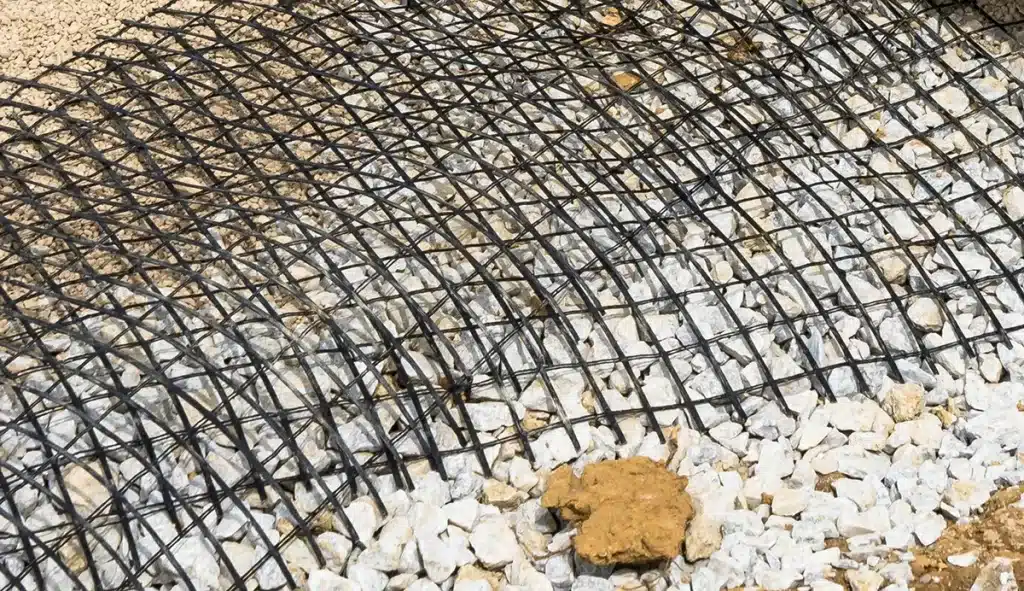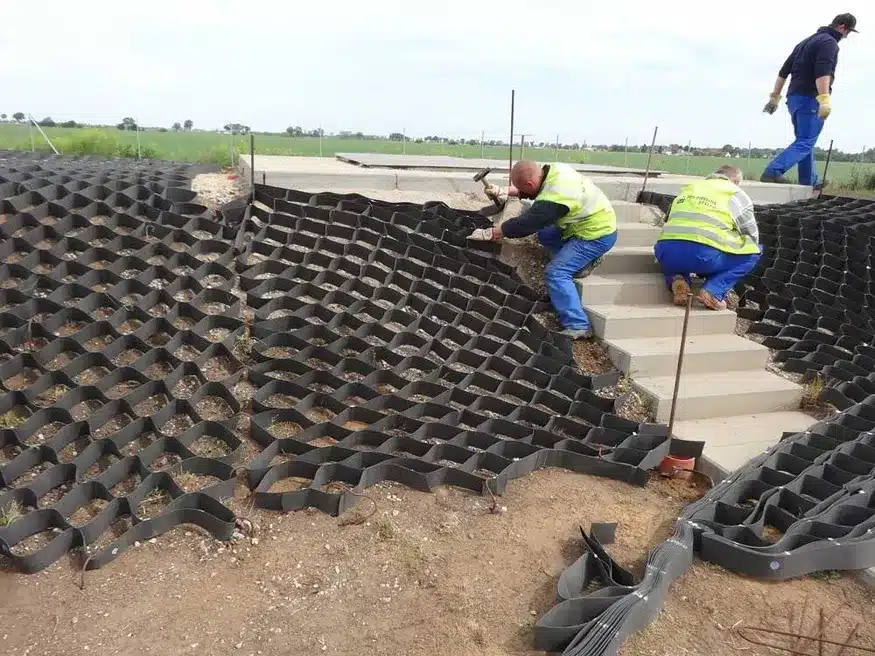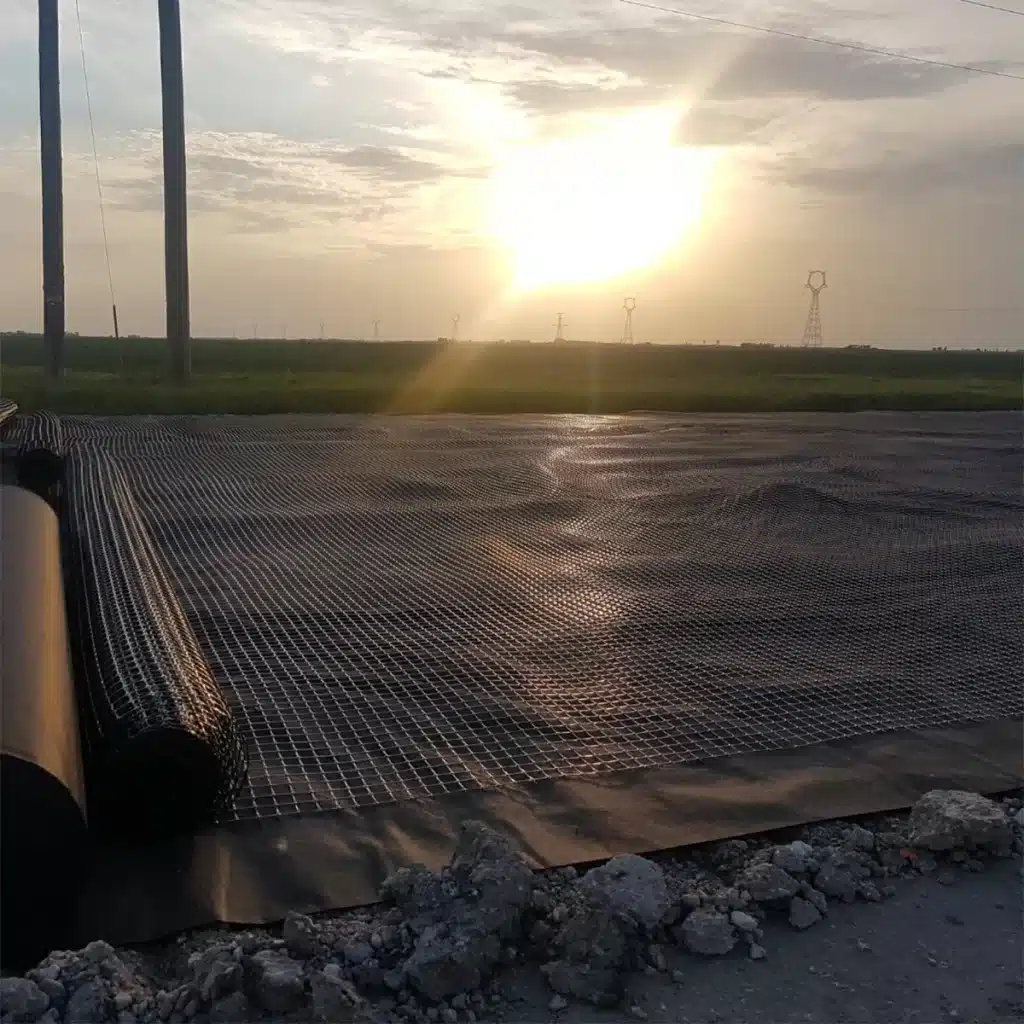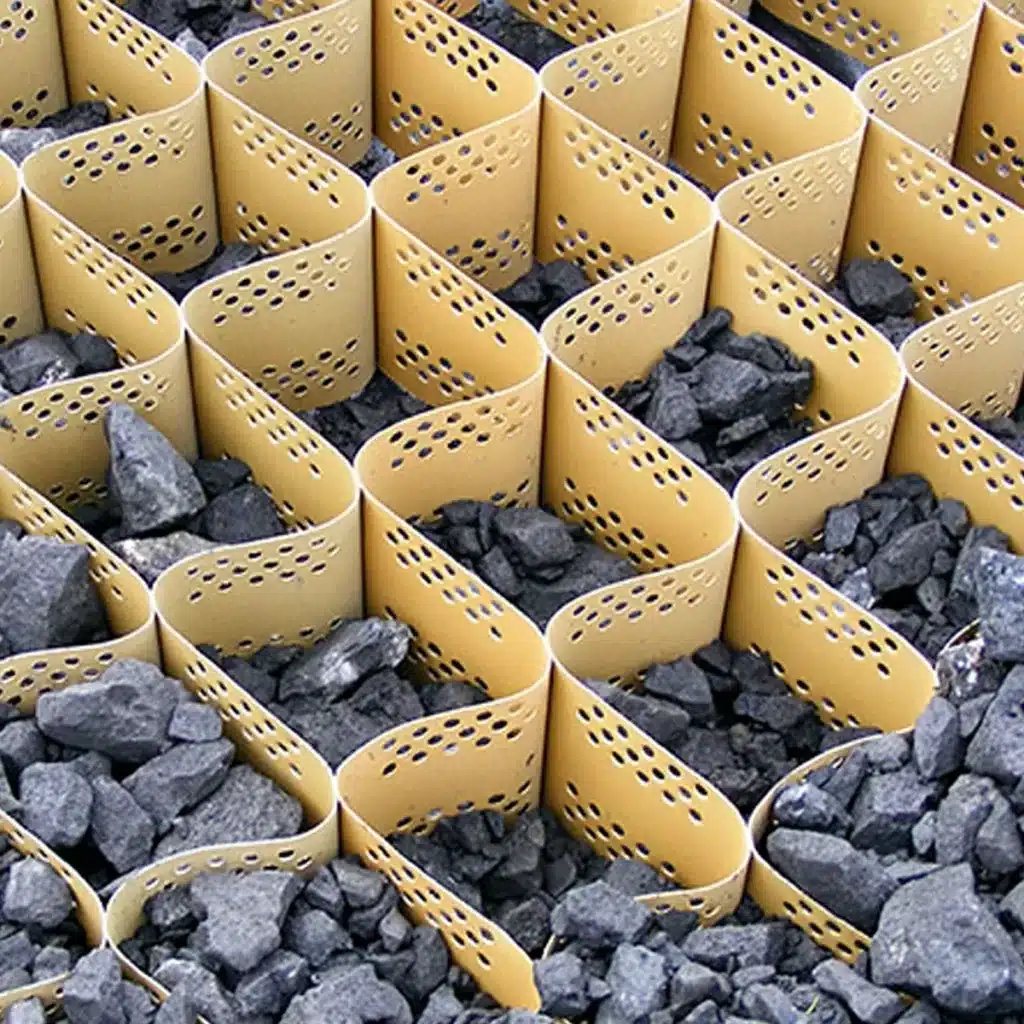+86-159 9860 6917
info@geofantex.com
geofantex@gmail.com
+86-400-8266163-44899
Geogrid reinforcement is a geosynthetic material composed of polymers, strategically employed to enhance the stability of soil, especially behind retaining walls. Installed in horizontal layers between wall courses and extending into the soil behind the wall, geogrids increase a wall system’s mass and overall stability. These geosynthetic materials are known for their remarkable tensile strength, allowing them to distribute forces effectively across a broader area of soil, preventing soil pull-apart under tension.
The primary purpose of geogrid is to create a robust, coherent mass behind retaining walls by stabilizing the soil. The stability of the soil largely depends on its friction angle, often referred to as shear strength. Geogrids play a crucial role in bolstering this stability.
When it comes to erosion control on slopes, geocells emerge as a reliable solution. Geocells are durable, UV-stable, and chemically resistant products consisting of pocket-like cells. These cells feature a special surface texture that fosters optimal contact with filling materials. Furthermore, the perforated cell walls facilitate hydraulic connections between individual pockets, allowing excess water to drain away and providing a pathway for roots to grow between cells. This permanent erosion control method with geocells effectively combats slope erosion and ensures long-lasting stability.

What is geogrid reinforcement?
Geogrid is a geosynthetic material, made of polymers, which is used to reinforce soil behind retaining walls. Installed in horizontal layers between wall courses and extending into the soil behind a wall, geogrid stabilizes the soil and so increases a wall system’s mass and stability.
What is the use of geogrid reinforcement?
A geogrid is a geosynthetic material used to reinforce soils and similar materials. Soils pull apart under tension. Compared to soil, geogrids are strong in tension. This fact allows them to transfer forces to a larger area of soil than would otherwise be the case.
What is the purpose of a geogrid?
Geogrid is a flexible mesh that is used to create a reinforced coherent mass behind the retaining wall by stabilizing the soil. The stability of the soil depends greatly on the friction angle it contains. The friction angle is often referred to as the shear strength of the soil.
How to stop erosion on a slope?
Permanent erosion control with geocells
Geocells are high-quality processed, areal products comprising pocket-like cells that have high UV stability and are chemically and biologically resistant. Geocells have a special surface texture which ensures optimum contact between the geocells and the filling material.
The cell walls are perforated to provide a hydraulic connection between the individual pockets and to allow excess water to drain away. The perforation therefore also provides a path for roots to grow between cells.

Geogrid reinforcement is a revolutionary engineering solution that enhances the stability and longevity of various structures, from roads and retaining walls to embankments and slopes. By effectively distributing loads and preventing soil erosion, geogrids provide crucial support to infrastructure projects. This innovative geosynthetic material is designed to strengthen the structural integrity of foundations, minimize settlement, and increase the overall performance of civil engineering projects. Discover the numerous benefits of geogrid reinforcement and how it can elevate the durability and resilience of your construction endeavors.



Get Free Sample
We’ll respond as soon as possible(within 12 hours)





















